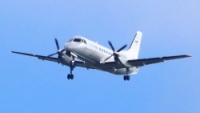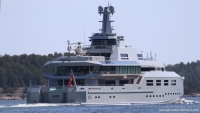How many ... travel?
A very simple and yet very complex question. What is considered “travel”?
The general definition of the verb from the Cambridge Dictionary suggests that travel is to make some sort of journey, usually over a long distance. And that commonly involves people. However, objects also travel. Light travels at a constant, finite speed, which in vacuum is calculated to be the astonishing 1,080,000,000 km/h. Sound travels with much lower speed in air, which is said to be around 1,235 km/h. The same article at the Cambridge Dictionary points that supersonic planes can travel faster than the speed of sound and that is a fact well documented over the last 50 years.
The readers, seeking the answer of the question "How many people travel?" from a touristic or business perspective, are very welcomed to check the estimates in the following piece.
In the rest of the website, we track vehicles commonly associated with long distance travel – aircraft and watercraft – and try to estimate how many are in active use. The approach is exhaustive, but it requires processing of a huge amount of information.
 “In the sky” section is dedicated to commonly used aircraft. The complete production lists of all models of Airbus, Boeing, Bombardier and Embraer are compared with the national registries, aircraft decommissioning data, reports of aviation accidents and other sources to determine which units are still in use. There is an attempt to document the activity through radiolocation logs, which are mostly regional at this stage. More visually appealing evidence is the photo of an aircraft in the sky, available in the picture galleries.
“In the sky” section is dedicated to commonly used aircraft. The complete production lists of all models of Airbus, Boeing, Bombardier and Embraer are compared with the national registries, aircraft decommissioning data, reports of aviation accidents and other sources to determine which units are still in use. There is an attempt to document the activity through radiolocation logs, which are mostly regional at this stage. More visually appealing evidence is the photo of an aircraft in the sky, available in the picture galleries.
 “On the water” section follows similar logic, but it is dedicated to various watercraft. The big difference is that there is no market dominance of juts few companies as it is for the aircraft production. Therefore, a centralized and well-collated production lists are not available. The ground evidence for active use of big vessels is the information from the radiolocation logs. For watercraft which can be approached with a camera in hand, there are also available pictures.
“On the water” section follows similar logic, but it is dedicated to various watercraft. The big difference is that there is no market dominance of juts few companies as it is for the aircraft production. Therefore, a centralized and well-collated production lists are not available. The ground evidence for active use of big vessels is the information from the radiolocation logs. For watercraft which can be approached with a camera in hand, there are also available pictures.
Although the site aims to be an exhaustive resource of information, there will be some time needed to achieve this. At this stage there is no pretence that we know it all, but we would like to. If there are ideas that anyone would like to share, suggestions on improvement or just a general discussion, you are very welcomed to write to:  or visit our message board.
or visit our message board.
We hope that you share our passion for data and information!